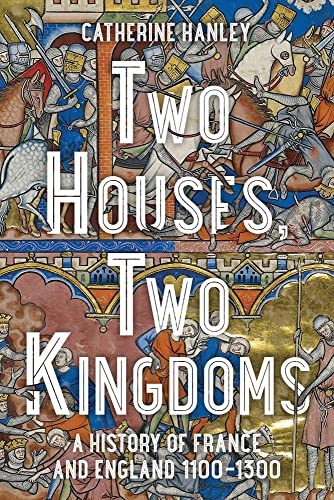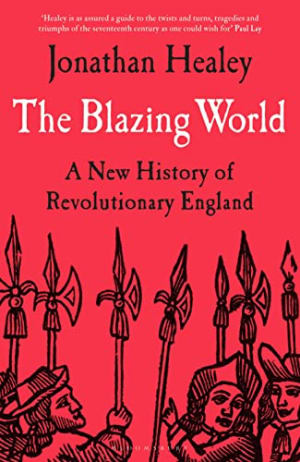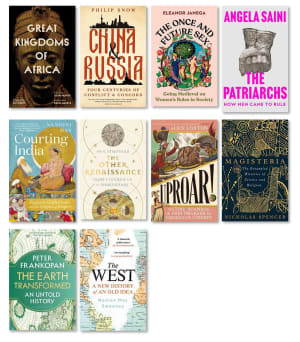The handsome black pig sniffed the musky Parisian air and grunted quietly with satisfaction. Lowering his snout to the floor, he sniffed again, picking up the unmistakable scent of fresh offal. Careful to keep to the side of the busy street, he trotted quickly towards the steaming dung heap with its recent deposit of fish guts still trickling down one side.
Ah what bliss it was that morning to be alive. And when he spotted the discarded fish head he was in very heaven! Eyes closed, tough rubbery lips questing into the ordure, molars champing - totally absorbed in the pleasure of the moment.
Which was why he didn’t spot the horsemen until it was too late.
Six of them at least bearing down on him, on towering - terrifying - war-horses. Time slowed down. He could almost feel the blast of warm air from the horses’ nostrils. The riders were laughing at something over by the river. They were only metres away. He had to get away before it was too late.
Darting out from behind the dung-heap with a frightened squeal he dashed away, trotters skidding madly on the cobblestones, he almost fell, righted himself, tried to run again and with a crash leaped straight into the forelegs of the leading horse. Taken completely by surprise the horse tripped forwards, throwing his rider over his head. The small black pig was left trapped, crushed, underneath the bulk of the gigantic horse.
His last thought as the breath was squeezed from his body was “what a ridiculous way this is for a fine pig like me to die”.
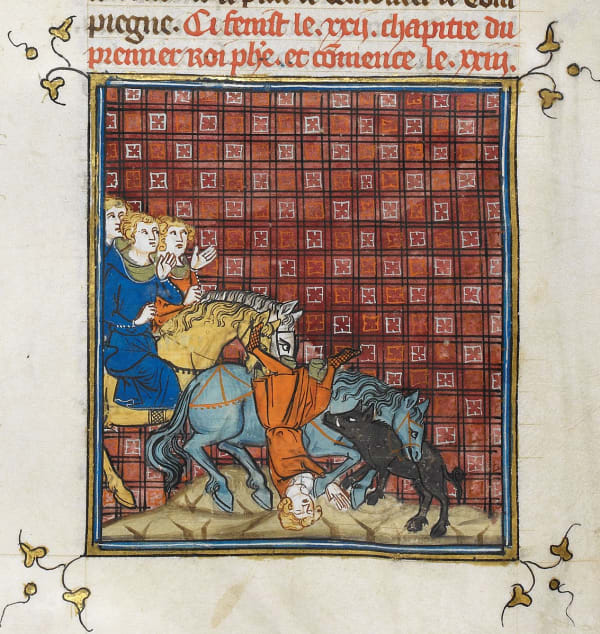
Death by horse: a pig and young king Philip on the streets of Paris, British Library
An accident of history?
As well as being the end of this handsome black pig, the other casualty of this 12th Century Parisian traffic accident was the 15 year old Philip, son of Louis the Fat and co-king of France. Thrown from his horse he landed so badly that he never regained consciousness and died one day later. No-one knows what happened to the horse. No-one knows what happened to the pig either so I have taken the liberty of filling in the blanks.
All of this raises the question: what really matters in history?
Catherine Hanley in Two Houses Two Kingdoms: A History of France and England 1100-1300 wants us to appreciate that people matter in history. Individuals in history, and Kings and Queens in particular, consciously shape the events around them.
For want of a horse
So if Philip the Unlucky hadn’t died falling off a horse, the course of war and peace for France and England could have taken a very different turn.
This is in contrast to the view that whoever was on the throne of England and France they were bound to fight because they represent two adjacent militarised power blocks and they just couldn’t help themselves. Or to put it another way: the medieval population of Europe is like a swarm of pine beetles - the beetles live, breed, eat, fight and die in a great dynamic mass. Medieval monarchs are no more in control of their own destiny than a pine beetle spearheading an insect infestation.
No-one thinks the pigs matter.
A family affair
Hanley is particularly interested in the interaction of the ruling dynasties of France and England from the period just after the Norman conquest of England and just before the hundred years war with France. This allows her to provide a different perspective to what we normally get from national histories, which tend to downplay anything not directly part of the “English” or “French” stories respectively because they are not so useful for the nation-building narrative arc. In reality the two royal families were closely intertwined through marriage and almost perpetual warfare (insert your in-laws joke here).1
With Hanley we get a detailed narrative thicket of kings, queens, princes, princesses, aristocrats and occasional churchmen as they lived, bred, ate, fought and died. But we hear about how this great mass of medieval elites lived their lives. We get to hear their names, understand their characters, and appreciate their individual motivations.
Heroes and anti-heroes
And there are some great stories in there! For example we have Blanche of Castille who was an incredibly able and successful ruler of France on behalf of her young son Louis IX, fighting off any challenge to his authority. Also Louis VIII (the Lion) who was effectively King of England for a short while until forced out - and was then King of France but for only three years before dying of dysentery on a crusade against his own people. And more familiar names like King John:
Loyalty might be inspired or coerced in a huge variety of ways, including popularity, martial prowess, inspirational leadership, effective governance, trustworthiness or plain fear. John’s problem was that he proved to be spectacularly bad at all of them.
Catherine Hanley, Two Houses Two Kingdoms
A cast of thousands
All the major noble characters are covered and a good number of the minor ones too. In fact one of the problems with reading this book is that there are so many names flying thick and fast through the plot that it was basically impossible for me to register them all. Here is a paragraph to give you a flavour - and pay attention at the back please:
[Henry II’s] eldest daughter, Matilda, was married to the elderly Henry the Lion, duke of Saxony; they had a daughter and four sons. The second, Eleanor, was queen of Castile via her marriage to Alfonso VIII; she had so far borne him six children, of whom only two daughters survived. She would go on to have more, her eventual family consisting of six daughters and two sons who would live long enough to reach their teens, although she would sadly outlive a number of these, too. And finally, Henry II’s youngest daughter, Joanna, was the queen of Sicily as the wife of William II. She had at present no children (although it is possible that she had given birth to one stillborn or short-lived son); after William’s childless death she would be married again, to Count Raymond VI of Toulouse, with whom she would have two surviving children, a son and a daughter. We will hear more of all three of these women’s families in due course.
Catherine Hanley, Two Houses Two Kingdoms
If you are the sort of person that gets turned off history because it feels like just a whole load of Kings and dates this won’t be the book that changes your mind. After a while I just let the introductions wash over me on the assumption that my brain would sort out which ones it felt worth remembering and which not.
Lots of good bits
So there are parts of the book that feel like a bit of a slog, but they were outweighed by parts that I found really engaging. I enjoyed in particular the section on King John and Louis VIII, and found a grim fascination in the stories of the different crusades (”I came, I saw, I caught dysentery and died”). Maybe it was because I had a little existing familiarity with these topics that I could see past the whirlwind of characters and enjoy the story I knew being told from a fresh angle.
(As an aside, Catherine Hanley is a consistently excellent and entertaining explainer on the podcasts that she did to promote Two House Two Kingdoms - you can find links to these below the review or on our podcast feed.)
Footsteps marching through history
Considering the question “how much do people really matter” also helped me to get a lot out of this book. There is not a simple answer - humans are neither pine beetles nor gods - but I enjoyed tracing the power structures that often guided the actions of the different Kings. For example: Philip II Augustus was best mates with each of the sons of Henry II and heirs to the English throne, until they actually succeeded to the throne. At which point the friendship was cancelled and he invited the next-in-line round his place to be his new best buddy, suggesting that it was a travesty that it wasn’t them on the throne instead.
You could argue as well that it was only after Henry III discovered that he was terrible at battles that he decided that St Louis IX was a lovely chap he would be delighted to visit for Christmas. In other words, conflict seemed to be the default position and it took something unusual to prevent it for any length of time.
Concluding remarks
At the beginning of this review I posed the question: what really matters in history? Perhaps what matters is what interests you. If you like big picture history - the bird looking down at the beetles - this may not fit the bill. If it is pigs you are after, I’m afraid they only get a fleeting mention. This book is for you if you like to read about human nature and people - lots of them! - in all their splendid individual variety.
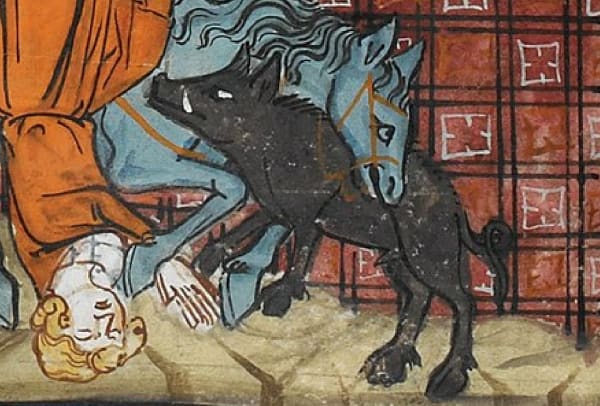
A pigs eye view, British Library
Henry III of England is an interesting example of this - as Hanley, says he was “the first of what we might call the Anglo-centric kings of England” despite the fact that he was “almost entirely French himself... Only one of Henry III’s eight great-grandparents, Empress Matilda, could in any way claim to be ‘English’” and his mother was Isabella of Angouleme, a great-granddaughter of Louis VI. ↩︎
Book details
(back to top)- Title -
Two Houses, Two Kingdoms : A History of France and England, 1100-1300
- Author -
Catherine Hanley
- Publication date -
July 2022
- Publisher -
Yale University Press
- Pages -
402
- ISBN 13 -
9780300253580
- Podcast episode -
- Podcast episode -
The Medieval Podcast: Two Houses Two Kingdoms with Catherine Hanley
- Amazon UK -
- Amazon US -

